Menu
One of the main reasons we provide aftercare products at Piercing HQ is because many folks in Western culture don’t trust that their body is capable of healing a very small wound without “help”. Unfortunately we often do more damage to the inbuilt healing ability of the human body by “helping” rather than by just leaving a piercing alone to heal.
More often than not an irritated piercing results from something we HAVE done
– rather than something we HAVEN’T.
The best thing to do is see your Piercer for advice. If you don’t trust your piercer to help you or you feel uncomfortable returning to the studio please see this link to find an experienced Piercer near you. At the very least they might be able to offer you some advice even if you can’t visit.
Typically there can be confusion between “infection” and “irritation”. Most of this information addresses the usual causes of irritation as they are a lot more common than an infection.
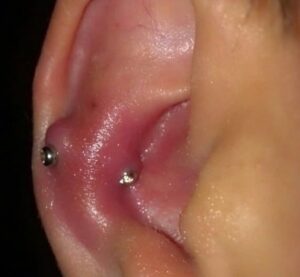 An infection should be actioned without delay. An infection may show as:
An infection should be actioned without delay. An infection may show as:Either way a professional piercer can normally help you, so please don’t panic. Chances are we’ve seen what is happening for you BEFORE so choose the advice of a professional you respect over “Dr Google” every time.
An irritated piercing is usually something you want to fix asap, and whilst there are solutions to your problem the irritation will likely return if the cause of the irritation is not removed. An example of this is poor quality jewellery.
An experienced piercer will be able to tell you if the reason for your irritation is due to the quality of your jewellery. This is one of the simplest things to fix with a quality jewellery change.
Read more about our jewellery here – and see some rusty jewellery pics!
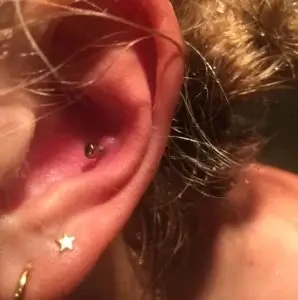
Conch bump due to excessive movement of the longer healing post.
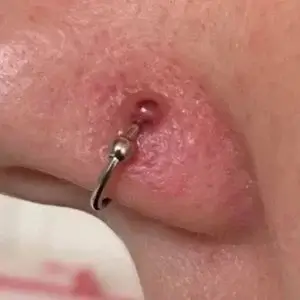
Nostril bump after stud was changed to a ring too early.
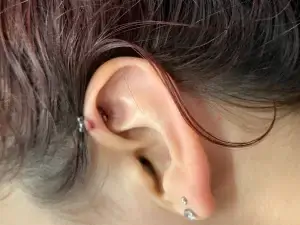
Irritated forward helix due to catching hair & knocking with glasses.
The discharge or “crusties” are the waste byproduct of the new cells forming as your piercing heals. This continues as long as the healing process is happening. It can be prolonged if you are moving your jewellery – AT ALL – whether that’s accidentally by knocking it or on purpose when cleaning. There is no need to move your jewellery or take it out to “clean it properly”.
A cream coloured crusty discharge is an indication that your body is healing your piercing and usually continues off and on throughout the first 3-6 months of the healing process. Because most of us don’t like how this crust looks it can be tempting to pick it off – DON’T do that. Let the warm water run over the piercing during your shower and this will soften any dried crust so that it can then be gently removed with a clean cotton bud / q-tip.
Sterile saline spray can also be used with a q-tip to gently remove softened crusties. If they don’t come away easily the further soaking with warm water can help.
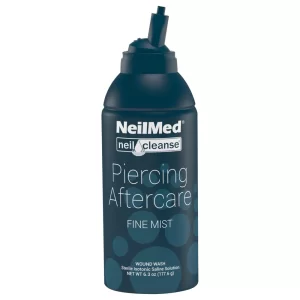
If your piercing is continuing to produce this discharge for longer than expected think about what you may be doing to prolong the healing process.
If your concerned about how your piercing is healing please reach out to an experienced Piercer for help. Aftercare support by piercers is an essential part of what we do. Many of the aftercare issues that arise can be easily addressed with some good advice.
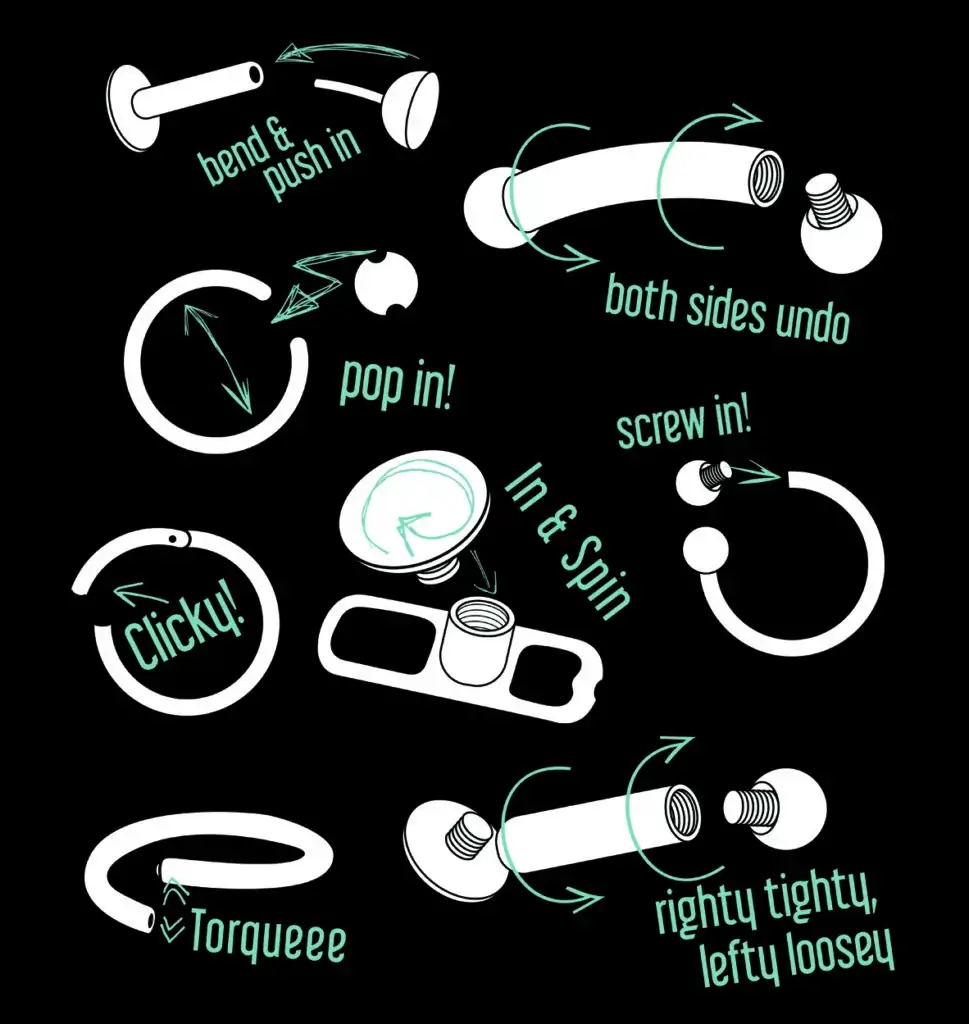
Designed by Joeltron. Used with permission